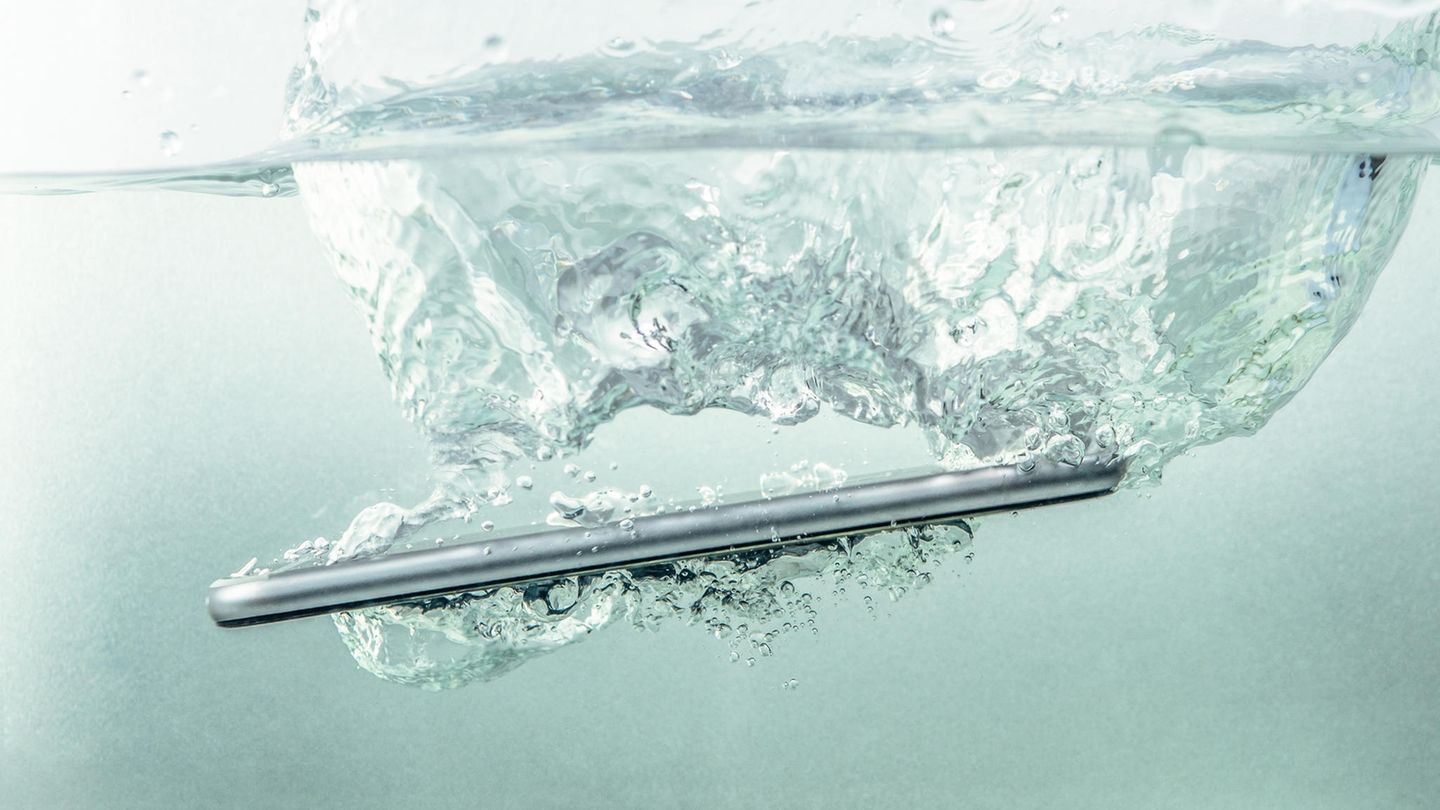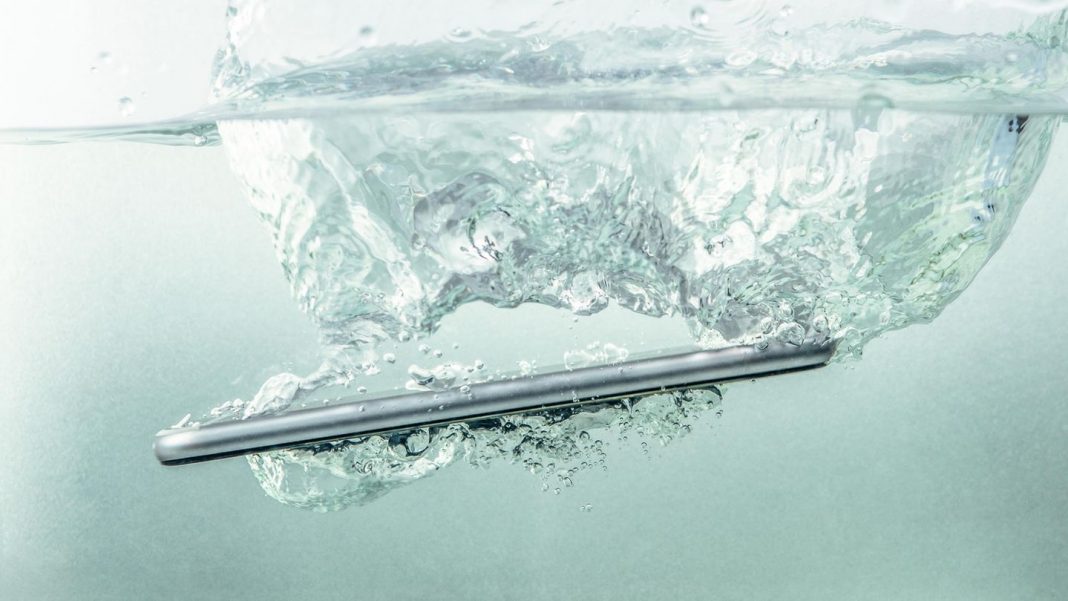Smartphone Protection Standards
These phones survive a dive in the toilet

Whether the smartphone survives the dive? Waterproof mobile phones recognize consumers by the appropriate certification.
© monte_foto / Getty Images
If a smartphone gets wet, this means certain death in electronic waste for most devices. But how do consumers recognize waterproof mobile phones, what do the various IP certifications mean and what should be considered if the iPhone & Co. have already fallen into the well?
Water has always been the nemesis of sensitive electronics such as those used in smartphones or mobile phones. Came the inside of the little computer in contact with the element that was their death sentence – at least then when the electronics was turned on. Apple, Samsung & Co. watched the smartphone-but only for a short time idly. Then, the engineers developed more durable housings that were supposed to protect the electronics from a water malheur of their owner.
The international protection standard “International Protection” (IP) reveals how waterproof these shells really are. One thing in advance: extensive and deep dives do not survive a waterproof smartphone. In swimming pool, pool, sea and lake you never want to go swimming with your smartphone without a protective cover. Let’s get back to IP certification.
IP certification: what do the two numbers mean?
It results from two digits of the DIN-EN-60529 standard for foreign bodies and liquids. A classic example is the IP69 certification. Each number has its own meaning: the first indicates how a device is protected against foreign objects (such as dust or dirt particles) and contact, and the second how resistant it is to liquid.
In the specific example IP69, the “6” means that no dust can enter the smartphone or mobile phone. In addition, there is complete protection of the interior from contact. By such” touches ” the engineers who have devised the protection standard mean, for example, the penetration into the interior with a small wire.
As explained, the second digit indicates how well a smartphone or mobile phone is protected against liquids. The “9” states that a technical device is protected against a targeted stream of water, such as from a high-pressure cleaner. If the device were IP68 certified, the ” 8 ” consumers would point out that the smartphone or mobile phone survived a submersion of up to 1.5 meters for a maximum of 30 minutes.
A technical device can be IP68 and 69 certified at the same time – but it does not have to be. The following table gives an overview of which number says what.
The individual DIN EN 60529 numbers in the overview
|
Code 1 |
Code 2 |
|
|
1 |
Protection against foreign objects from 50 mm |
Protection against drops |
|
2 |
“” 12.5 mm, and access with a Finger |
Protection against falling dripping water |
|
3 |
“” from 2.5 mm, and access with a tool |
Protection against falling spray water |
|
4 |
“” 1 mm, and access with a wire |
Protection against splashing water |
|
5 |
“” 1 mm, and access with a wire |
Protection against all-round water jets |
|
6 |
Dustproof and protection against contact |
Protection against all-round strong jet water |
|
7 |
Protection against temporary immersion (1 meter, max. 30 Min.) |
|
|
8 |
Protection against permanent immersion (from 1.5 meters, max. 30 Min.) |
|
|
9 |
Protection against water during high – pressure or steam cleaning |
So waterproof are iPhones
For premium smartphones, an IP68 certificate is a good thing in 2021. iPhones are no exception. That iPhone 12 Pro Max, iPhone 12 Pro, iPhone 12 and iPhone 12 Mini all are waterproof to IP68 and survive up to 30 minutes at a depth of up to six meters, according to Apple.
Also waterproof according to IP68 are the iPhone 11 Pro and iPhone 11 Pro Max. However, according to the manufacturer, they only survive four meters of depth for up to 30 minutes. Slightly weaker is the iPhone 11which lasts only two meters for 30 minutes. The same applies to iPhone XS and iPhone XS Max.
The cheaper iPhone SE however,” only ” is certified according to IP67. The same applies to iPhone XR, iPhone X, iPhone 8, iPhone 8 Plus, iPhone 7 and iPhone 7 Plus. They survive at a depth of one meter up to 30 minutes.
So waterproof are the top models from Samsung
Competitor Samsung is in no way inferior to Apple in terms of waterproof. The new generation of its Galaxy S smartphones are fully IP68 certified. These include: Galaxy S21, S21 Plus and S21 Ultra. And even the previous models offer certified protection against liquids.
Specifically, these devices are the Galaxy Note 20, Note 20 Ultra as well as Galaxy S20, S20 Plus, S20 Ultra and S20 FE. And even their predecessors Galaxy Note10, Note10 Plus and Galaxy S10e, S10 and S10 Plus are IP68 certified. Probably the most robust smartphone of the South Koreans is the Samsung XCover Pro its, which is even IP69 certified.
An exception are the folding smartphones from Samsung. For example, the Samsung Galaxy Fold 2 does not offer certified protection against liquids. They want to keep it away from water of any form.
Underwater photography with your Smartphone?
As beautiful as the certified water protection of a smartphone may be, none of the devices is suitable for underwater photography. This requires an additional protective cover. One thing should be said in advance about underwater photography with the smartphone: Compared with a compact camera, the sensor of a smartphone camera is many times smaller. And that means that smartphones usually need a lot of light to shoot beautiful pictures. And light under water is known to be rather scarce.
The market for cheap protective cases for mobile phones is relatively large. However, the covers are more of an additional protection if you are traveling or want to take underwater pictures in the pool. Most models among them range only for a depth of up to 15 meters. They are therefore not suitable for long and deeper dives. If you want to take underwater photos of extensive dives with your smartphone, you have to drive up larger guns and dig deeper into your pocket. A suitable protective cover for the project would be the Weefine Smart Housing One Size. However, it is not done with her.
The manufacturer offers more underwater photo and Video equipment such as special mounts, lenses, and lights. Nice: The case communicates with the smartphone via Bluetooth. However, a special app is required. In addition, not all smartphones fit into the Weefine Smart Housing. The equipment is also not cheap: with shell, rig, lenses and light underwater photographers quickly spend over 1000 euros. Whether such an investment makes sense for the smartphone at all, every diver must decide for himself. Especially if you consider that there are actioncams with waterproof housing significantly cheaper.
You might also be interested in:
This article contains so-called affiliate links. More information can be found here.
Source:Computerbild.de; Tauchen.de



